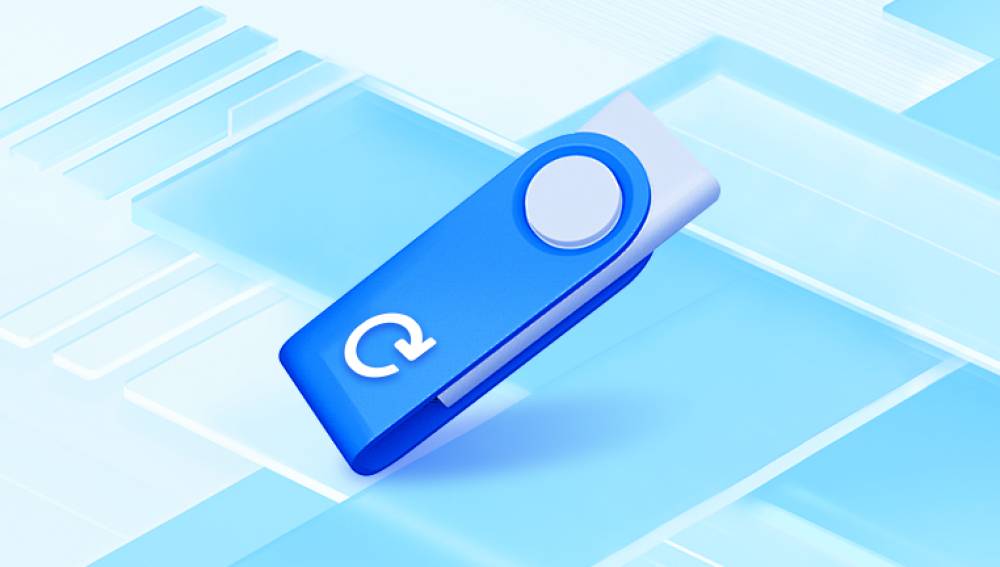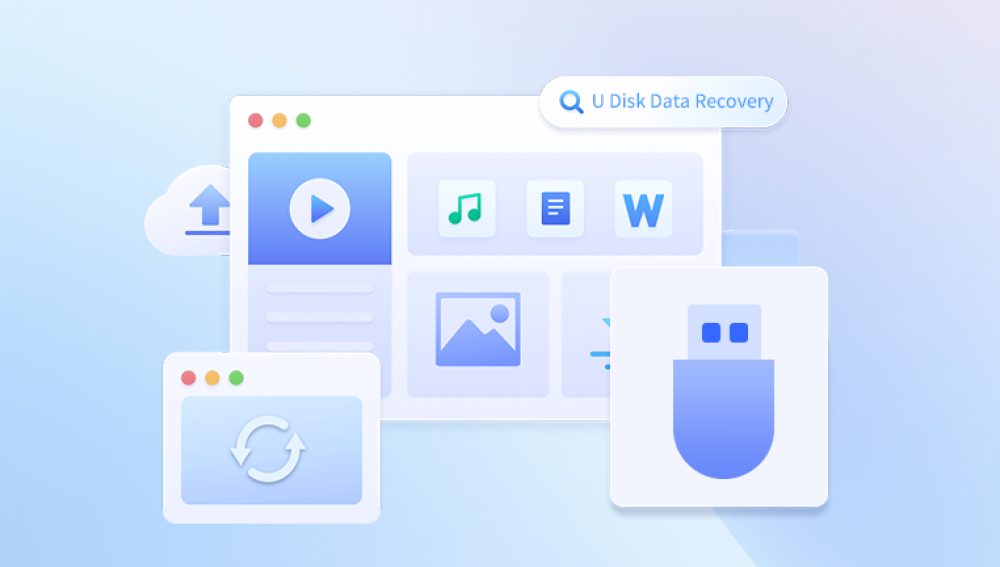Flash drives, also known as USB drives, have become an essential part of modern data storage, providing a convenient way to carry files, backup data, and transfer information between devices. However, like any storage device, flash drives can experience data loss due to accidental deletion, formatting, corruption, or malware attacks. Losing important files can be a frustrating experience, but thanks to modern recovery tools and methods, it's possible to restore those files in most cases.
Flash Drive Data Recovery
Before we dive into the methods, it’s important to understand how data recovery works. When you delete files from a flash drive, they aren’t immediately wiped from the device. Instead, the space they occupy is marked as available for new data, while the original data remains until overwritten. This means that if you act quickly, you have a high chance of recovering your files before they are overwritten.
Key factors that influence successful recovery:
How quickly you attempt recovery: Avoid adding new files to the flash drive, as it may overwrite the deleted data.
Type of deletion: Whether the file was simply deleted or removed due to formatting or corruption.
Common Causes of Data Loss on Flash Drives
Understanding the cause of data loss can help determine the best recovery approach:
Accidental Deletion: Files deleted without realizing they are important.
File System Corruption: The file system on the flash drive may become corrupted, rendering the data inaccessible.
Formatting: Reformatting a drive erases all visible data but leaves traces of files that can still be recovered.
Virus Attacks: Malware may hide or delete files from your flash drive.
Physical Damage: A damaged USB drive may make the files inaccessible, though recovery in this case requires specialized hardware.

Preparing for Data Recovery: Precautions to Take
To maximize the chances of recovering your lost files, follow these essential precautions:
Stop using the flash drive immediately: Every time data is written to the drive, it could overwrite the space where your deleted files are stored.
Don’t attempt to repair the drive: If the drive shows errors, avoid attempting to format or repair it until you try recovery.
Use reliable recovery tools: Opt for trusted data recovery software to ensure the best outcome.
Step-by-Step Guide: Recovering Deleted Files from a Flash Drive
Step 1: Try Checking the Recycle Bin (For PC Users)
If you deleted the files while the flash drive was connected to your computer, they might be temporarily stored in the Recycle Bin.
Open the Recycle Bin on your computer.
Check if the deleted files are listed.
If you find the files, simply right-click and select "Restore."
If they’re not in the Recycle Bin, don’t worry there are other methods we can use.
Step 2: Use Built-in System Restore (Windows)
Sometimes, you can use the Windows built-in File History or Previous Versions feature to recover deleted files:
Right-click on the folder or drive where the files were stored.
Select Properties and then navigate to the Previous Versions tab.
If any earlier versions are available, select the appropriate one and restore your files.
This method works only if you have enabled File History or System Restore prior to the deletion. If not, you’ll need to proceed with a more advanced method.
Step 3: Using Data Recovery Software
Data loss can be a nightmare, whether it’s due to accidental deletion, formatting, corruption, or hardware failure. Fortunately, Drecov Data Recovery is here to help. Offering a comprehensive and user-friendly solution, Drecov Data Recovery is designed to cater to a wide range of data recovery scenarios, ensuring that your lost files can be restored with minimal effort.
Wide Range of Recoverable Data: Drecov Data Recovery can recover a variety of file types, including documents, photos, videos, audio files, and more. Whether you’ve lost essential work files or precious family photos, this software has the ability to bring them back.
Compatibility with Multiple Devices: Drecov Data Recovery supports various storage media, such as hard drives, SSDs, USB flash drives, SD cards, and external drives. It works seamlessly with both Windows and macOS operating systems, ensuring versatility and ease of use.
Accidental Deletion Recovery: If you’ve accidentally deleted a file, Drecov Data Recovery can quickly scan your device to recover the lost data. It can even retrieve files deleted from the Recycle Bin or Trash, giving you peace of mind.
Formatted Drive Recovery: Formatting a drive by mistake doesn’t mean all is lost. Drecov Data Recovery’s powerful algorithms can dig deep into the storage to recover data from a freshly formatted or corrupted drive, ensuring your files are not gone for good.
Partition Recovery: In cases where entire partitions have been lost or corrupted, Drecov Data Recovery’s advanced partition recovery tool can restore not just individual files, but entire lost partitions, making it invaluable in complex recovery scenarios.
User-Friendly Interface: With an intuitive and easy-to-navigate interface, Drecov Data Recovery is suitable for users of all technical levels. You don’t need to be an expert to recover your data; the software guides you step by step through the process.
Preview Functionality: One of the standout features of Drecov Data Recovery is the ability to preview recoverable files before restoration. This allows users to identify and select only the files they need, saving time and storage space.
Fast and Deep Scanning Modes: Depending on the situation, users can choose between a fast scan to quickly retrieve recently deleted files or a deep scan for thorough recovery of files from corrupted or formatted storage devices.
Step 4: Recovering Data from a Formatted Flash Drive
Even if your flash drive was formatted, data recovery is still possible as the original data is not immediately erased.
Use software like Disk Drill or EaseUS, which can recover data from formatted flash drives.
Follow the same scanning and recovery steps outlined above.
Deep Scanning for Formatted Drives:
Some software, like PhotoRec and Disk Drill, offer a "deep scan" option. This feature allows them to search the drive more thoroughly for lost files by analyzing raw data.
Step 5: Recovering Files from a Corrupted Flash Drive
If your flash drive is corrupted, it may not be recognized by the system or you may see errors like "USB Drive Needs to Be Formatted."
Methods to Fix Corruption:
CHKDSK Command (Windows):
Open Command Prompt as an administrator.
Type the command chkdsk /f X: where X is the letter of your flash drive.
This process will attempt to fix any file system errors that may be preventing you from accessing your data.
Repairing the Drive Using Built-in Tools:
Right-click the drive and select Properties > Tools > Check Now to scan and repair errors.
If successful, try accessing the files. If not, use data recovery software to extract the data.
Step 6: Professional Data Recovery Services
If all software recovery attempts fail, and your flash drive has physical damage or severe corruption, it may be time to turn to professional data recovery services.
When to Seek Professional Help:
Physical Damage: If the flash drive is physically damaged, data recovery software won’t help. A professional service can disassemble the drive and retrieve the data directly from its memory chip.
Complex Corruption: In cases of severe file system corruption where software can’t recover the files, professional services have specialized tools to restore the data.
Choosing the Right Service:
Research reputable data recovery companies.
Look for a service that provides diagnostics before charging for recovery.
Be aware that professional services can be expensive, but they offer the highest chance of successful recovery.
Preventing Future Data Loss
Once you’ve successfully recovered your data, it’s important to take steps to prevent future loss:
Regular Backups: Keep regular backups of your important data on multiple devices or cloud storage services.
Safely Eject Flash Drives: Always use the “Safely Remove Hardware” option before disconnecting your flash drive to prevent corruption.
Antivirus Protection: Keep your computer and flash drives safe from malware and viruses by regularly updating your antivirus software.
Use Reliable USB Drives: Invest in high-quality flash drives from reputable manufacturers, as cheaper alternatives are more prone to failure.




